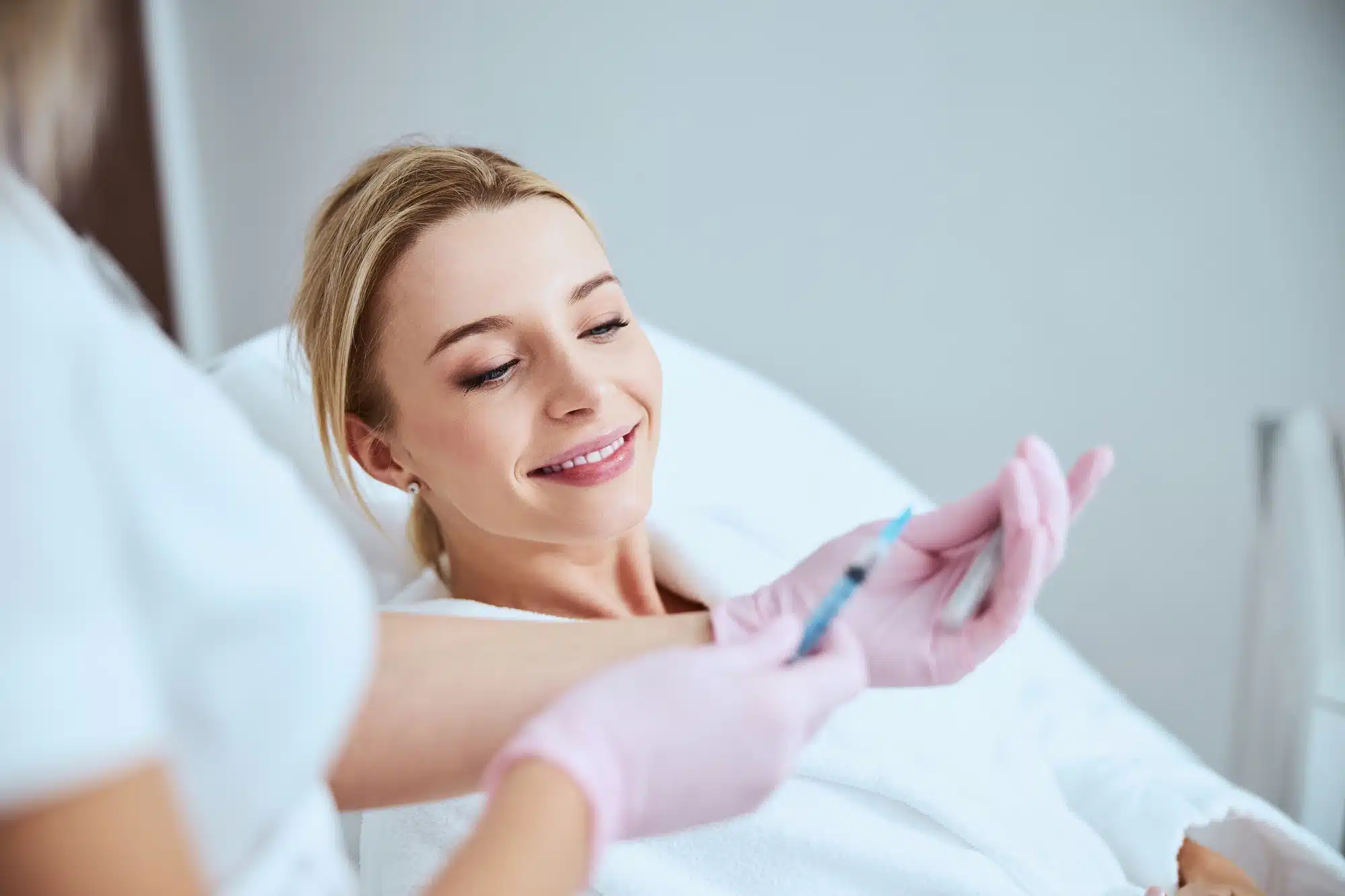
Botulinum toxin is a type of neurotoxic protein with muscle relaxing properties that is derived from Clostridium botulinum bacteria. This Gram-positive and spore-forming microorganism is found abundantly in places like lakes, ponds, and soils. This bacterium produces eight different types of botulinum toxin, from Types A to H, of varying degrees of toxicity. As of now, types A and B are well-researched and are used commercially and medically due to their effective muscle relaxing activity. Medical-grade botulinum toxin is harvested in a strict laboratory setting and extensively purified to contain only a therapeutic amount of the toxin. Once injected, it helps to temporarily relax muscle contractions so to alleviate disorders associated with painful and abnormal muscle spasms. It also helps to smoothen dynamic wrinkles that appear due to normal muscle movements. As a result, botulinum toxin is classified under a class of medications known as neuromuscular paralytic agents. Botox is the first brand of botulinum toxin that was commercially available on the market; hence, it is sometimes—often mistakenly—used interchangeably when referring to botulinum toxin in general. Nevertheless, Botox is available in two different versions, Botox Therapeutic and Botox Cosmetic, both of which are intended to treat different concerns.
What are the similarities between Botox Therapeutic and Botox Cosmetic?
Both Botox Therapeutic and Botox Cosmetic are manufactured by Allergan Pharmaceuticals and share a number of similarities. The similar aspects include the following:
- The active ingredient: Both Botox Therapeutic and Cosmetic contain botulinum toxin type A (onabotulinumtoxinA) as the active component. This neurotoxin protein is extracted from cultures of the Hall strain of Clostridium botulinum that are fermented with casein hydrolysate, glucose, and yeast extract. The toxin molecules are then purified to be free from any contaminants and bacterial endotoxins that may induce immunogenic reactions in patients. The botulinum toxin present in both these muscle relaxers are bound to complexing proteins, which are notorious for causing botulinum toxin resistance due to the production of antibodies. The inactive ingredients present in both Botox products are human albumin and sodium chloride.
- The mechanism of action: Both Botox Therapeutic and Cosmetic share the same mechanism of action, as they both temporarily relax muscles by preventing the release and transmission of acetylcholine, a type of neurotransmitter, at the neuromuscular junction. This prevention of the release and transmission of acetylcholine leads to intentional muscle paralysis that lasts until the toxin gets metabolized away from the injected tissues.
What are the differences between Botox Therapeutic and Botox Cosmetic?
Despite their close similarities, Botox Therapeutic and Cosmetic can be differentiated from one another based on the factors detailed below:
- Indications for usage: The major difference between these two variants of Botox lies in their individual clinical indications. Botox Therapeutic is approved by the US Food and Drug Administration (FDA) to treat the following health conditions:
- Upper and lower limbs spasticity associated with stroke in adults;
- Cervical dystonia or spasmodic torticollis in adults;
- Urinary incontinence due to detrusor muscle overactivity associated with a neurologic condition in adults;
- Chronic migraines in adults.
- The dosage form and strengths: Botox Therapeutic exists in two strengths: 100 and 200 units of botulinum toxin type A. Botox Cosmetic is available in 50 and 100 units of botulinum toxin type A.
- Ideal candidates: The suitability of a patient for treatment with either of these Botox variants must be established during the initial consultation session. Though Botox Therapeutic and Botox Cosmetic share the same formulation, its profile safety differs greatly. The list of contraindications for Botox Therapeutic is as follows:
- Allergic to any of the components present or other botulinum toxin preparations
- Infection at proposed treatment area(s)
- Urinary tract infection or urinary retention
Moving over to talking about Botox Cosmetic, this specific formulation’s use is only approved in patients in the age range of 18 to 65, who are not hypersensitive to the ingredients contained within Botox Cosmetic, and who do not have an existing infections at or near the proposed treatment area(s).
Generally, Botox Therapeutic is used for medical conditions, and Botox Cosmetic is used for aesthetic concerns.
Related Articles
Joanna Carr
Full-Face Botox: Master the Holistic Treatment Approach
Here's a comprehensive medical guide to full-face Botox with dosing protocols, muscle-specific injection sites, and consensus-based treatment standard...
Joanna Carr
The Non-Invasive Neck Lift: Achieve a Tighter Neck Without the Scalpel
Interested in learning more about Using The Non-Invasive Neck Lift Procedure To Achieve a Tighter Neck? Browse Doctor Medica's comprehensive archive o...
Joanna Carr
How To Approach Contouring The Male Jawline
Have an interest in learning about How To Approach Contouring The Male Jawline? Browse Doctor Medica's extensive archive of blog postings.


